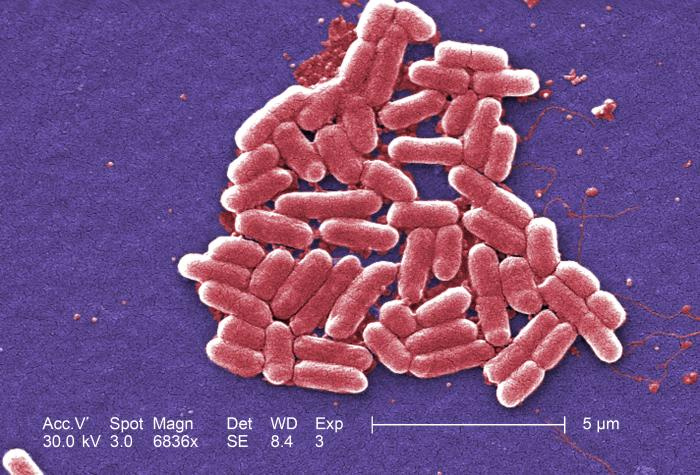
Enterohaemorrhagic 𝐸𝑠𝑐ℎ𝑒𝑟𝑖𝑐ℎ𝑖𝑎 𝑐𝑜𝑙𝑖 O157:H7 is an important food-borne pathogen. People who ingest this bacteria usually get sick from Shiga toxin-producing 𝐸. 𝑐𝑜𝑙𝑖 (STEC) 3 to 4 days after. 𝐸. 𝑐𝑜𝑙𝑖 infections may get a type of kidney failure called hemolytic uremic syndrome (HUS).
The most recent outbreak recorded by the Center of Disease Control (CDC) ended on January 15, 2020. Contaminated romaine lettuce was the vector and affected 27 states in the USA, with 85 hospitalizations out of 167 reported cases.
𝐸. 𝑐𝑜𝑙𝑖 is a Gram-negative, rod-shaped bacteria. It is motile due to its flagella. It is normally found in the intestines of healthy people and animals. It seldom causes disease when in the intestines, however, when introduced to other parts of the body, it can cause severe illnesses.
Domain: Bacteria
Phylum: Proteobacteria
Class: Gammaproteobacteria
Order: Enterobacterales
Family: Enterobacteriaceae
Genus: 𝐸𝑠𝑐ℎ𝑒𝑟𝑖𝑐ℎ𝑖𝑎
Species: 𝐸. 𝑐𝑜𝑙𝑖
Serotype: O157:H7
Photo 1: Under a high magnification of 6836X, this digitally-colorized, scanning electron microscopic (SEM) image depicted a growing cluster of Gram-negative, rod-shaped, Escherichia coli bacteria, of the strain O157:H7, which is a pathogenic strain of E. coli.
image from CDC.
